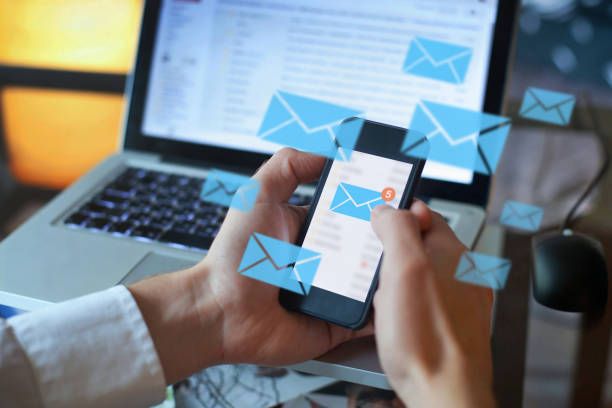In the world of email marketing, ensuring your messages reach the intended recipients' inbox is crucial for the success of your campaigns. However, with the ever-increasing volume of spam emails, it has become essential to monitor and optimize your email deliverability. This is where email junk checking comes into play. In this comprehensive guide, we will explore the best practices, tools, and techniques for email junk checking. By the end, you will have the expertise to maximize your email deliverability, avoid spam filters, and engage effectively with your audience.
Understanding Email Junk Checking

Email junk checking involves assessing the likelihood of your emails being classified as spam and not reaching the recipient's inbox. By evaluating various factors that influence email deliverability, you can identify potential issues and take corrective actions to ensure your emails are not flagged as junk. Here are some key points to consider when it comes to email junk checking:
- Spam Filters and Algorithms: Email service providers (ESPs) and internet service providers (ISPs) employ sophisticated spam filters and algorithms to identify and filter out spam emails. These filters analyze multiple aspects of an email, including content, sender reputation, and engagement metrics, to determine whether an email is legitimate or spam.
- Email Authentication: Implementing email authentication protocols like Sender Policy Framework (SPF), DomainKeys Identified Mail (DKIM), and Domain-based Message Authentication, Reporting, and Conformance (DMARC) helps establish your domain's legitimacy and can positively impact email deliverability.
- Content Analysis: The content of your emails plays a significant role in spam filtering. Avoiding spam trigger words, excessive use of promotional language, and misleading subject lines can help prevent your emails from being flagged as junk.
- Sender Reputation: Maintaining a good sender reputation is crucial for successful email delivery. ISPs assess your sending practices, such as email volume, engagement rates, and complaint rates, to determine your reputation as a sender.
Tools and Techniques for Email Junk Checking

To effectively check for email junk and enhance deliverability, you can utilize various tools and techniques. Here are some commonly used approaches:
- Email Deliverability Testing Tools: Tools like Mail-Tester and MailGenius provide comprehensive email deliverability testing. They evaluate your emails based on multiple factors, including authentication, content analysis, and sender reputation, to determine their likelihood of being marked as spam.
- Spam Score Checkers: Spam score checkers analyze the content of your emails and provide a spam score or rating. These tools highlight potential issues that could trigger spam filters and suggest improvements to optimize your emails for better deliverability.
- Email Analytics and Engagement Tracking: Monitoring email analytics and engagement metrics helps you understand how recipients interact with your emails. High open rates, click-through rates, and low unsubscribe and complaint rates indicate a healthy sender reputation and increase the chances of your emails reaching the inbox.
- List Hygiene and Segmentation: Regularly cleaning and segmenting your email list ensures that you are targeting engaged subscribers and avoiding inactive or disinterested recipients. This practice helps maintain a high-quality subscriber base and reduces the risk of spam complaints.

Best Practices for Email Junk Checking
To maximize the effectiveness of your email campaigns and improve deliverability, consider the following best practices:
- Follow Email Deliverability Guidelines: Familiarize yourself with email deliverability guidelines provided by ESPs and ISPs. Adhering to these guidelines ensures your emails comply with industry standards and reduces the chances of being flagged as spam.
- Optimize Subject Lines and Email Content: Craft engaging subject lines that accurately represent the content of your emails. Avoid using excessive capitalization, symbols, or spam trigger words that might trigger spam filters. Focus on delivering valuable content to your subscribers.
- Implement Email Authentication: Configure SPF, DKIM, and DMARC for your domain to authenticate your emails and protect against spoofing and phishing attempts. Proper email authentication enhances your credibility as a sender and improves deliverability.
- Maintain a Healthy Sender Reputation: Monitor your sender reputation regularly and take corrective actions if necessary. Engage with your subscribers, maintain a consistent sending schedule, and promptly address any spam complaints or unsubscribe requests.
- Seek Feedback from Recipients: Encourage recipients to add your email address to their address book or whitelist. This helps ensure that future emails land in the inbox rather than the spam folder. Including a prominent unsubscribe link also reduces the chances of recipients marking your emails as spam.
Frequently Asked Questions (FAQs)
Q1. How can I improve my email deliverability?
Improving email deliverability involves various factors such as sender reputation, email authentication, content optimization, and engagement tracking. By following best practices, regularly monitoring deliverability metrics, and using email junk checking tools, you can optimize your email deliverability.
Q2. Are there any specific spam trigger words to avoid in email content?
While there is no definitive list of spam trigger words, certain words and phrases like "free," "limited time offer," or "urgent" have historically been associated with spam. However, it is essential to consider the context and overall email content when assessing the likelihood of being marked as spam.
Q3. How often should I clean my email list?
Regularly cleaning your email list is recommended to maintain a high-quality subscriber base. The frequency depends on your email sending volume and engagement rates. Conduct list hygiene at least once every few months to remove inactive or disengaged subscribers.
Q4. Can I prevent my emails from being marked as junk by all ISPs?
While it is challenging to guarantee that your emails will never be marked as junk by any ISP, following best practices, implementing email authentication, and monitoring deliverability metrics can significantly improve your chances of reaching the inbox.
Q5. Should I use a single tool or a combination of tools for email junk checking?
Using a combination of tools and techniques provides a comprehensive approach to email junk checking. Each tool has its strengths and focuses on different aspects of deliverability. Experiment with different tools to find the best combination that suits your needs.
By mastering the art of email junk checking, you can enhance the effectiveness of your email campaigns, increase engagement with your audience, and avoid the pitfalls of the spam folder. Implementing best practices, leveraging powerful tools, and staying informed about the evolving email deliverability landscape will position you as an expert in maximizing email deliverability. So, start taking proactive steps today and watch your email campaigns thrive!

